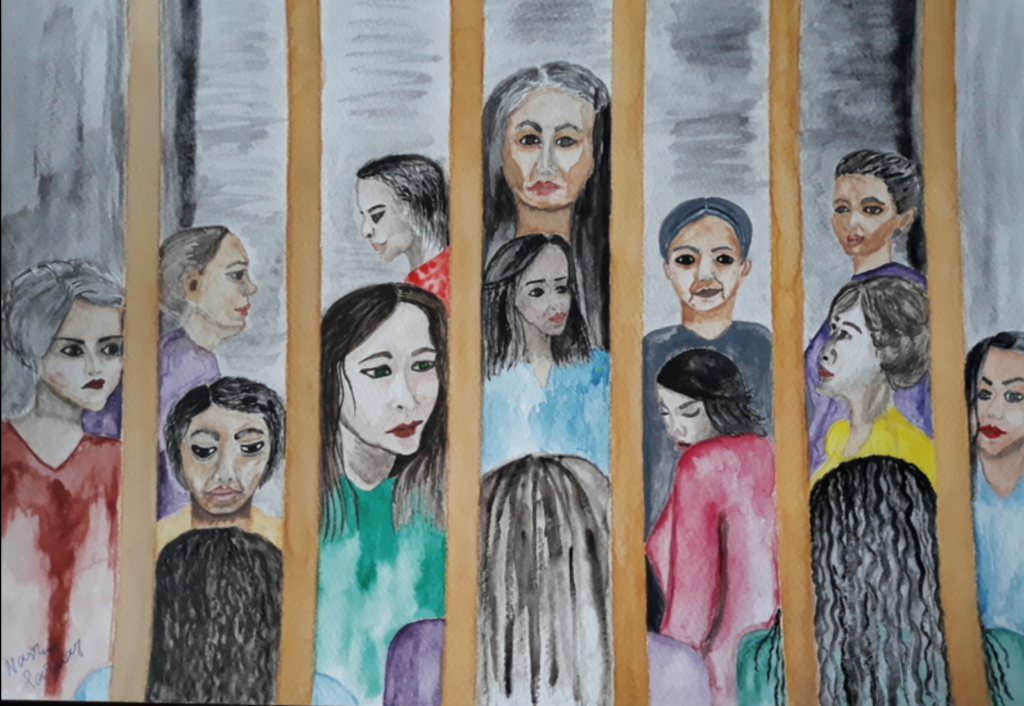...And later in the notebooks, Xavar depicts the unbearable moment when Mahvash, who was like a mother to her in prison, was called by the guards for execution: “She kissed me and wished that I would ‘stay alive’ as she went. ‘Stay alive’ are the last words uttered by those who go to be executed to us who are still living. They are the same words, spoken in different accents and with varying degrees of fear, hesitation, anxiety, confusion, or even happiness that I have heard so many times here.” - Nasrin Parvaz
 In 1979, Nasrin Parvaz returned from England, where she had been studying, and became a member of a socialist party in Iran fighting for a non-Islamic state in which women had the same rights as men. Three years later, at the age of 23, she was betrayed by a comrade and arrested by the regime’s secret police.
In 1979, Nasrin Parvaz returned from England, where she had been studying, and became a member of a socialist party in Iran fighting for a non-Islamic state in which women had the same rights as men. Three years later, at the age of 23, she was betrayed by a comrade and arrested by the regime’s secret police.
(Hardcopy and Paperback)
 “For those of you who weren’t able to see it, it was an exhibition of paintings by foreign national prisoners and ex-prisoners, taken from a variety of sources. The exhibition was on display from the 1st to the 7th of May, and was opened by our MP, Rosie Duffield.”
“For those of you who weren’t able to see it, it was an exhibition of paintings by foreign national prisoners and ex-prisoners, taken from a variety of sources. The exhibition was on display from the 1st to the 7th of May, and was opened by our MP, Rosie Duffield.”
“the writer is a lonely hunter.”

 “Nasrin gives a frank account of her time in Iran’s prison system which has opened my eyes to the extremes that can be endured and overcome. It is a testament to her resilience and that of others who remained resolute and refused to recant their beliefs. Nasrin survived and I celebrate her ability to share these experiences from which we can all learn. I recommend this memoir to you.”
“Nasrin gives a frank account of her time in Iran’s prison system which has opened my eyes to the extremes that can be endured and overcome. It is a testament to her resilience and that of others who remained resolute and refused to recant their beliefs. Nasrin survived and I celebrate her ability to share these experiences from which we can all learn. I recommend this memoir to you.”
In Tehran there is a historic circular building once known as the Joint Committee Interrogation Centre. Its designers were German, so the balcony railings were decorated with Nazi symbols. Reza Shah ordered it in 1932 and it was ready in 1937. Political prisoners were tortured there.
Copyright all rights reserved for the author and respectful publications.




